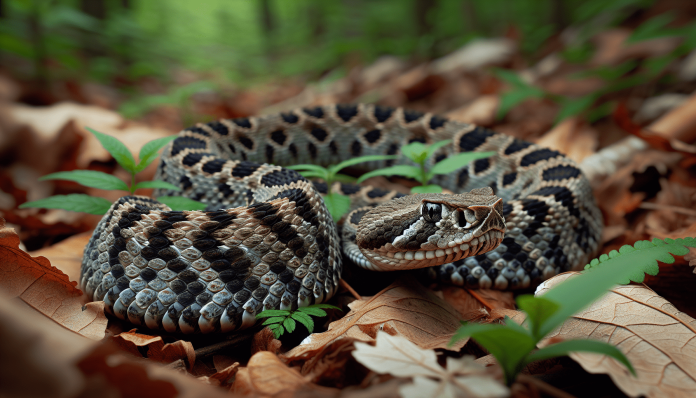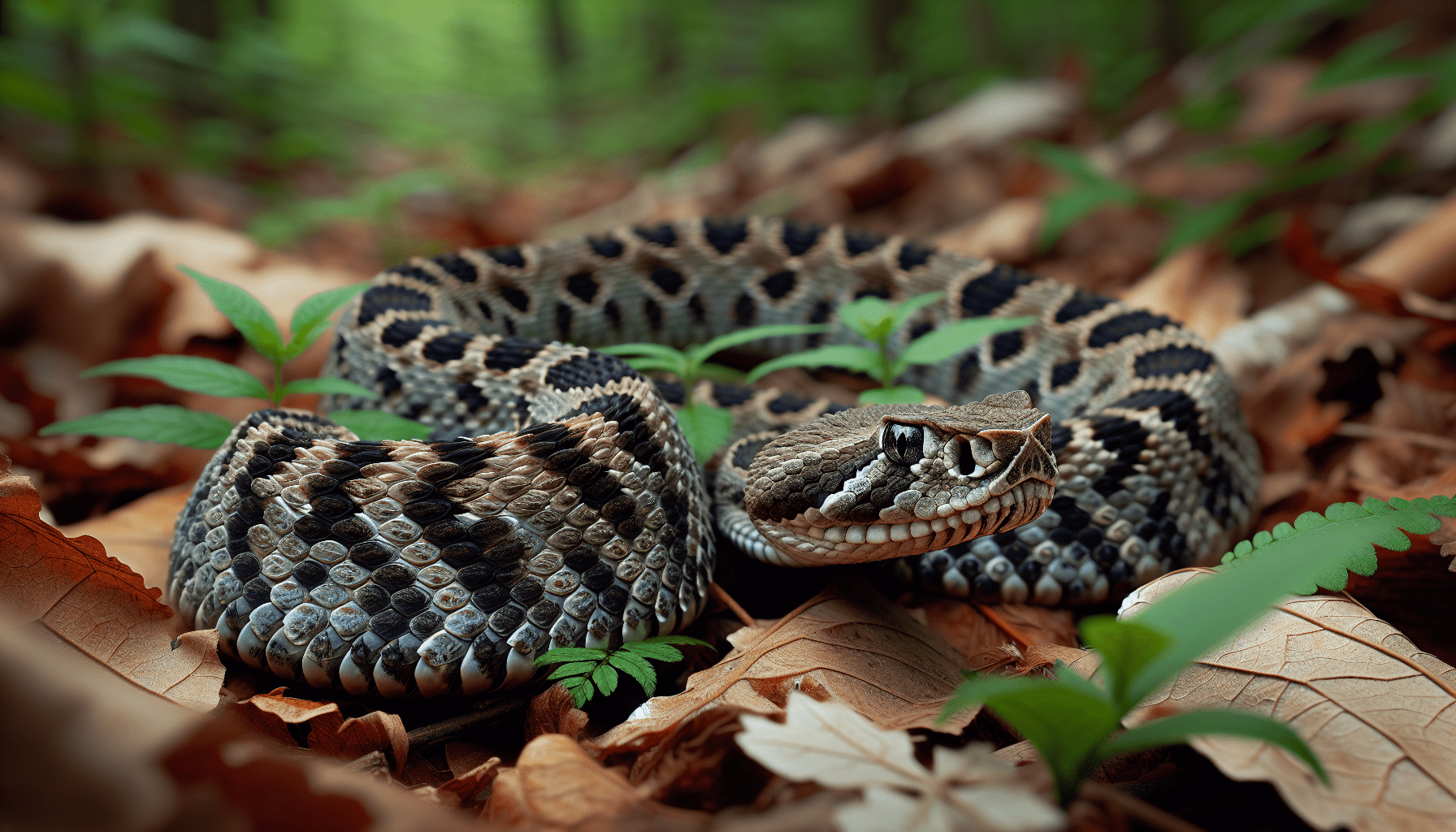
The Eastern Massasauga Rattlesnake (Sistrurus catenatus) is one of the most intriguing and misunderstood reptiles in Ohio. 🐍 As the only venomous snake native to the state, this elusive creature plays a critical role in the local ecosystem. However, due to its secretive nature and declining population, it remains shrouded in mystery for many Ohio residents. This article delves into the life and significance of the Massasauga rattlesnake in Ohio, exploring its habitat, behavior, conservation status, and the importance of preserving this remarkable species.
What is the Massasauga Rattlesnake? 🐍
Physical Characteristics 🐍
The Eastern Massasauga Rattlesnake is a relatively small rattlesnake, typically measuring between 18 to 30 inches in length. 🐍 Some key features include:
- Coloration and Patterns: They have a distinct coloration that includes a gray or light brown body with darker brown or black blotches along their back. This coloration helps them blend seamlessly into their surroundings.
- Rattle: Like other rattlesnakes, the Massasauga has a rattle at the end of its tail, which it uses as a warning signal when threatened.
- Heat-Sensing Pits: Located between their eyes and nostrils, these pits allow the Massasauga to detect warm-blooded prey even in complete darkness.
Habitat in Ohio 🏞️
In Ohio, the Massasauga rattlesnake primarily inhabits wetland areas, such as wet prairies, fens, and marshes. 🏞️ These environments provide the necessary cover and food resources for their survival. Specific habitat requirements include:
- Moisture: They thrive in areas with ample moisture, which supports a rich diversity of prey species.
- Vegetation: Dense vegetation provides cover from predators and extreme weather conditions.
- Temperature Regulation: Wetlands help regulate temperatures, offering cooler areas during the summer heat and warmer microhabitats during the cooler months.
Behavior and Diet 🐍
The Massasauga rattlesnake is primarily diurnal during cooler months but becomes more nocturnal during the hot summer months. 🐍 Key behavioral traits include:
- Diet: Their diet mainly consists of small mammals, such as mice and voles, as well as amphibians and insects.
- Hunting Strategy: They are ambush predators, relying on their camouflage to remain undetected until prey comes within striking distance.
- Defensive Behavior: When threatened, they may coil and rattle to deter potential predators. Biting is usually a last resort.
Conservation Status and Efforts 🌿
Declining Populations 🌿
The Massasauga rattlesnake is listed as a threatened species both federally and in the state of Ohio. 🌿 Several factors contribute to their declining populations, including:
- Habitat Loss: Wetland drainage and development for agriculture and urbanization have significantly reduced their habitat.
- Persecution: Due to their venomous nature, Massasaugas are often killed by humans out of fear.
- Climate Change: Changes in temperature and precipitation patterns can alter their habitats and affect their survival rates.
Conservation Initiatives 🌿
Efforts to conserve the Massasauga rattlesnake in Ohio involve multiple strategies, including habitat protection, public education, and research. 🌿 Notable initiatives include:
- Habitat Restoration: Projects aimed at restoring and preserving wetland habitats are crucial for the survival of this species.
- Legal Protection: The Massasauga rattlesnake is protected under state and federal law, making it illegal to harm or kill them.
- Public Awareness Campaigns: Educating the public about the ecological benefits of the Massasauga and dispelling myths about their danger can reduce unnecessary killings.
- Research and Monitoring: Ongoing research helps understand their behavior, population dynamics, and habitat requirements, informing better conservation strategies.
The Ecological Importance of the Massasauga Rattlesnake 🐍
Role in the Ecosystem 🌱
The Massasauga rattlesnake plays a vital role in Ohio’s ecosystem. 🐍 As both predator and prey, they help maintain a balanced and healthy environment. Key ecological roles include:
- Pest Control: By preying on small mammals like mice and voles, they help control rodent populations, which can otherwise become pests.
- Food Source: They are a food source for larger predators, such as birds of prey and larger mammals, contributing to the food web.
- Indicator Species: Their presence indicates a healthy wetland ecosystem, as they require specific conditions to thrive.
Misconceptions and Human Interactions 🐍
Despite their ecological importance, Massasauga rattlesnakes are often misunderstood and feared. 🐍 Common misconceptions include:
- Aggressiveness: Many people believe they are aggressive, but in reality, they prefer to avoid confrontation and will only bite as a last resort.
- Venom Danger: While their venom is potent, Massasauga rattlesnake bites are rarely fatal to humans, especially with prompt medical treatment. They play a far more beneficial role in their ecosystem than the perceived threat they pose.
How to Coexist with the Massasauga Rattlesnake 🐍
Safety Tips for Humans 🐍
Living in areas inhabited by Massasauga rattlesnakes requires awareness and respect for their presence. 🐍 Here are some tips for safely coexisting:
- Stay on Trails: When hiking in known Massasauga habitats, stay on designated trails to avoid accidental encounters.
- Watch Your Step: Be mindful of where you step, especially in tall grass or underbrush where snakes may be hiding.
- Educate Yourself: Learn to identify the Massasauga and understand their behavior. This knowledge can reduce fear and promote coexistence.
- Don’t Disturb: If you encounter a Massasauga, give it space and do not attempt to handle or harm it.
Protecting Their Habitat 🌿
Protecting the Massasauga rattlesnake also involves safeguarding their habitat. 🌿 Steps to help include:
- Support Conservation Efforts: Engage with and support organizations dedicated to wetland conservation and species protection.
- Responsible Land Use: Advocate for responsible land use practices that protect and restore wetland habitats.
- Report Sightings: If you see a Massasauga, report it to local wildlife authorities. This information helps with monitoring and conservation efforts.
Conclusion 📝
Understanding “What is Massasauga rattlesnake Ohio?” 🐍 involves appreciating the complexity and significance of this unique species. The Eastern Massasauga rattlesnake is more than just Ohio’s only venomous snake; it is a vital component of the state’s natural heritage and ecosystem. By learning about their behavior, habitat needs, and the challenges they face, we can better appreciate the importance of conserving these fascinating creatures.
Efforts to protect the Massasauga rattlesnake not only help preserve a species at risk but also ensure the health and balance of Ohio’s wetland ecosystems. Through education, conservation, and respectful coexistence, we can contribute to the survival of the Massasauga rattlesnake and the rich biodiversity it supports. 🌿🐍🌱



















